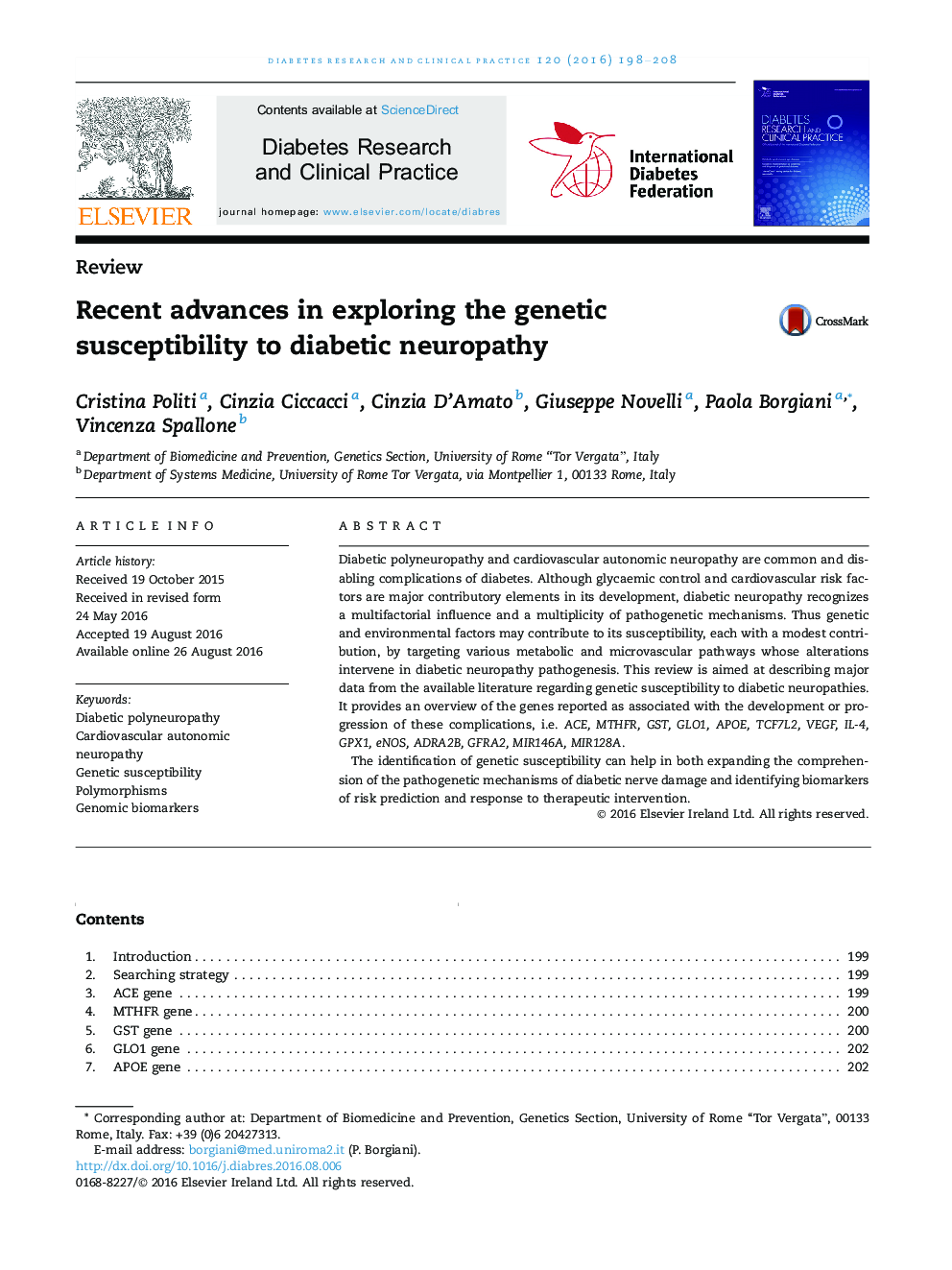| Article ID | Journal | Published Year | Pages | File Type |
|---|---|---|---|---|
| 2796119 | Diabetes Research and Clinical Practice | 2016 | 11 Pages |
•DPN and CAN are common and disabling complications of diabetes.•Genetic and environmental factors could contribute to diabetic neuropathy susceptibility.•Genetic factors could be useful in identifying patients more prone to develop neuropathy.
Diabetic polyneuropathy and cardiovascular autonomic neuropathy are common and disabling complications of diabetes. Although glycaemic control and cardiovascular risk factors are major contributory elements in its development, diabetic neuropathy recognizes a multifactorial influence and a multiplicity of pathogenetic mechanisms. Thus genetic and environmental factors may contribute to its susceptibility, each with a modest contribution, by targeting various metabolic and microvascular pathways whose alterations intervene in diabetic neuropathy pathogenesis. This review is aimed at describing major data from the available literature regarding genetic susceptibility to diabetic neuropathies. It provides an overview of the genes reported as associated with the development or progression of these complications, i.e. ACE, MTHFR, GST, GLO1, APOE, TCF7L2, VEGF, IL-4, GPX1, eNOS, ADRA2B, GFRA2, MIR146A, MIR128A.The identification of genetic susceptibility can help in both expanding the comprehension of the pathogenetic mechanisms of diabetic nerve damage and identifying biomarkers of risk prediction and response to therapeutic intervention.
